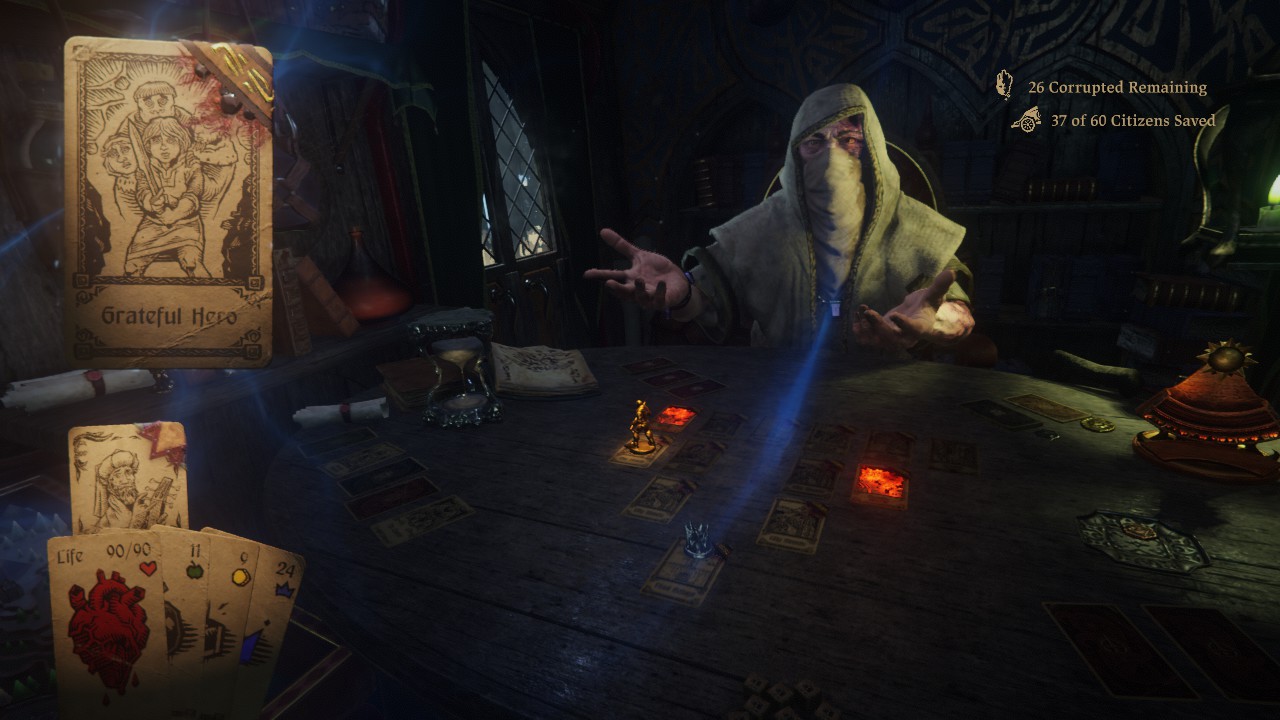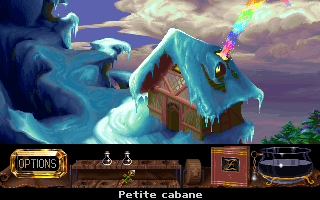
At first he seems to be motivated purely by revenge, but the further you get into the campaign, the clearer it is that Kallas has to be stopped. A later released DLC allows the player to use him when replaying challenges after the final battle. Guest-Star Party Member: Directly helps the player in the final battle in the second game.While the player can set up their own deck for the most part, he alone sets up the rules of the game and the challenges. Big Good: Acts as this in 2, slowly teaching the player how the game is played and never tries to do them any harm.Big Bad: While not exactly evil, he does act as the main antagonistic force in the first game, setting himself as the final challenge the player needs to overcome.Ambiguously Human: While he looks human enough, his longevity and his knowledge of the supernatural and the Game puts what exactly is he into question.He's definitely an antagonist in the first game, but he's generally polite and soft spoken. Affably Evil: For a certain interpretation of evil.He is but a distortion of your memory - do not trust him. Rogue Protagonist: After he wins the game and seizes the Deck, its raw power corrupts him over the course of a century.One-Man Army: He manages to destroy entire hordes of bandits, skeletons, rat men, and lizardfolk by himself.No Name Given: Subverted in the second game, his actual name is Kallas.Subverted in Hand of Fate 2, he has always been the Warlord. Such as being a Monk who forsakes material wealth but does more damage against skeletons. Multiple-Choice Past: The Wildcards DLC allows the player to select a set of different Fates which affect different attributes about the player character.Legendary in the Sequel: A century later, the towns he saved from the hordes worship him like a god.The Hero: The main protagonist and the one you control in the first game.Despite his nobility and heroism, he is little more than a bloodthirsty human supremacist. In the sequel, he uses the Deck to create a human-supremacist empire, and directs it to exterminate most of the non-human population, driving the lizardmen and ratmen races to extinction. Secretly, he hates all non-humans, even the ones that help him. Fantastic Racism: Most of his foes are nonhuman.As Hand of Fate 2 shows, the Dealer was right - Kallas himself notes he's sick of card games and wants good, honest combat. Blood Knight: The Dealer sees him as such.He has to battle through all of the Dealer's minions to win the game.

There is also a blessing which increases your Dice total by +2.The player of the Game of Life and Death. There are a number of items which improve your dice rolls including a Ring which adds +2 to your total and armor which gives you an additional reroll. This Challenge is by far the easiest to complete 5 Dice Gambits in a single Challenge, the Encounter Arm Wrestling also offers another Dice Gambit that is typically easy to complete.

The Hierophant Challenge has a lot of Dice Gambits as does the Encounter Berta's Betting House which increases the number of Dice Gambits you can complete in each Challenge. Doing this removes Colbjorn from all encounters for the next 3 encounters but can make the difference between success and failure in a dice gambit. Once you unlock Colbjorn as a companion he has the special ability of being able to roll a 4th Die to increase your odds of success. For instance if you need a 12 to succeed and you roll a 5, a 3 and a 1 you can reroll the 3 and the 1 to try and get the higher numbers you need for a total of 12. For this Achievement you need to successfully complete 5 Dice Gambits in a single attempt of a Challenge.įor a Dice Gambit you roll 3 dice and then you have the option to reroll any or all of the dice if you don't succeed in your first roll. In order to successfully complete a dice mini game you must roll higher than the number required for that Gambit. Dice gambits are one of the new Mini Games added to the sequel.


 0 kommentar(er)
0 kommentar(er)
